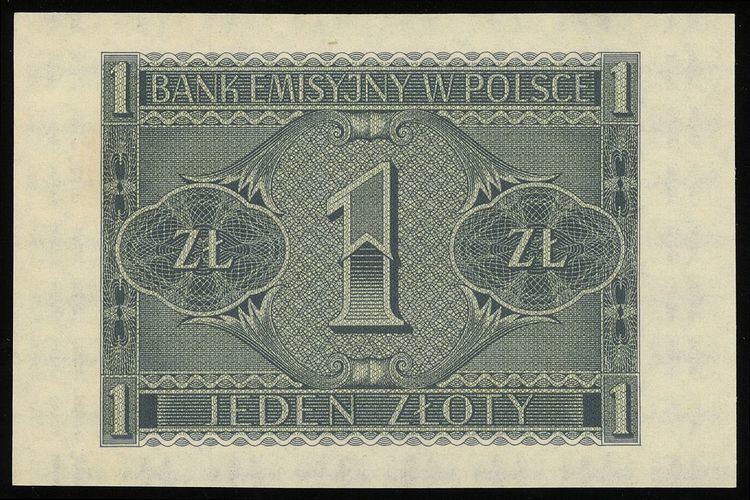 | ||
Bank of Issue in Poland (Polish: Bank Emisyjny w Polsce, German: Emissionbank in Polen, also translated into English variously as the Bank of Issue, Issue Bank, Issuing Bank or Emitting Bank in Poland) was a bank created by the Germans in the General Government (Nazi occupied Poland) in 1940.
Contents
Creation
After the German invasion of Poland, the Reichsbank decided not to introduce German currency there, as it did not want to increase the money supply. Instead, it introduced a system of Reichskreditkassen (credit offices of the German Reich), which issued temporary bonds. This system, intended to be temporary from the beginning, was to be replaced by a new German controlled currency and central banks in occupied territories. In the meantime, various Polish banks and credit institutions were temporarily closed, while some of their assets were nationalized by the German government. Many people lost their savings. In particular, institutions with Jewish ownership were targeted, as well as Jewish customers. At the same time, German banks began opening their offices in the newly available territories. The plans for a complete takeover of the Polish financial system by the Germans was never finished before the war ended.
On 15 December Hans Frank, the governor of the General Government, passed a decree creating the Bank Emisyjny, which began operating in April. Bank Emisyjny was located in Kraków. It was the only institution in occupied Poland with the name Poland in its title.
It was headed by Polish economist, Feliks Młynarski. His German supervisor, and representative of the Reichsbank, was Fritz Paersch.
Operations
Bank Emisyjny de facto replaced the independent central bank of Poland, the Bank of Poland, which managed to evacuate most of its assets, including gold, and part of the mint, before the invasion. Officially, however, the Bank of Poland still existed, as the Germans unsuccessfully tried to use it on the international scene to regain the assets evacuated and under the control of the Polish government in exile.
The bank's main functions were: issuing currency, discounting promissory notes and cheques, issuing short term loans, and taking deposits.
The official exchange rate was set as 2 złoty = 1 reichsmark. This system, favoring the German currency, was one of the ways of boosting the Nazi economy by pillaging that of the conquered country. A black market exchange rate varied between three and four złotys to a reichsmark.
From 1940 until 1945 it financed the Nazi economy with little regard for the Polish economy. The Bank, as well as other financial institutions in occupied Poland, were tasked with gathering as much capital as possible, to be invested in the German economy. Approximately 11 billions złotys (5.5 billions reichsmarks) were transferred to the German army. It printed new currency (unofficially named after the Bank headquarters "złoty krakowski" - Złoty of Kraków - or after director Młynarski "the młynarki") with no backing which resulted in increasing inflation (market prices rose by three to six times and the exchange rate with the American dollar doubled over the war period).
In January 1945, the remaining assets and German personnel of the Bank were evacuated into Germany proper. It was officially liquidated by the Polish communist government in 1950.
Resistance connections
Młynarski was in fact connected to the Polish Underground State which allowed widespread falsification of the new currency by the Polish underground. His very nomination to the post of the director was made in consultation with and approved by the Polish government in exile. The mint's printing presses were also used for falsification of other documents.
